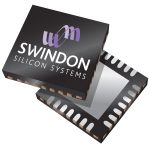By turning towards automation to complete many repetitive activities, Industry 4.0 processes drastically reduce opportunity for human error — frequently cited as a major cause of occupational incidents.
Smart sensors are an essential piece of the Industry 4.0 technology stack, gathering data for further analysis to gain actionable insights for range of industrial safety use cases.
Industrial settings can be harsh and potentially dangerous environments. Sensors are the first point of call to ensure the accurate monitoring of the industrial environment — whether that’s detecting temperature changes, presence of hazardous gas, fluid leaks, or measuring air quality.
If a measurement is recorded that falls outside of defined safety parameters, a smart sensor connected to the factory’s network can trigger alerts to prevent further issues arising.
While these sensors are often found on equipment or within the factory building itself, more recently they’ve been integrated into personal protective equipment (PPE).
As a longstanding essential for factory floor personnel, making PPE smarter with added sensors and communication technology is the future of improved occupational safety.
Sensors to detect any variable — both of the physical environment and the person’s body — from within PPE helps to identify any unexpected changes for those working in harsh environments.
For example, if someone working in extreme heat registers a body temperature higher than is healthy, the system can trigger an alert to notify them as well as others, to take necessary action.
Another example relates to noise attenuation. Factories and work sites can be noisy places, and the risk of hearing loss for frequenters is high. According to Health and Safety Executive, if average exposure to noise is higher than 85 A-weighted decibels (db (A)), employers must provide hearing protection, which can take the form of noise attenuating headsets.
Noise attenuating headsets are integrated with a smart sensor to monitor ambient noise. If noise reaches a volume higher than what’s considered safe, the smart sensor can trigger the headphones to emit the exact opposite signal to the ambient sound waves to ‘cancel out’ the sound, protecting workers from hearing damage.
Keeping workers safe from their environment is one thing, but they also need to be kept safe from each other. Since the pandemic there’s also been an increased emphasis on preventing transmission of COVID and other infections.
It’s possible for personnel to benefit from wearable devices with integrated proximity sensors to maintain adequate social distance from one another. If a proximity sensor detects another person within the define social distancing space, it can alert both employees to move to a safe distance.
What’s more, on a companywide level, collecting and analysing this data from each device helps to recognise hotspots for social distancing breaches to better advise on potential layout changes to help facilitate safe distancing.
Sensing, conditioning, digitalising and communicating analogue smart sensor signals into a digital format that is compatible with the facility’s wider network is key to enabling data analytics and deploying automation and alert flows.
In the case of industrial safety, the accuracy and reliability of this signal conversion is essential to the safety of workers. While an off-the-shelf solution could deliver similar functionality, there are several reasons why opting for an ASIC is the superior choice.
An ASIC design team can invest in performance where it will most benefit the particular application. Swindon will be able to optimise the entire signal path down to the finest detail, while removing unnecessary features to reduce complexity and size where it is not required.
ASIC design focuses on integrating as much circuitry as possible into a single package, reducing the component count for higher reliability. What’s more, assembly becomes simpler, and the electronics better protected from environmental factors such as vibration and high temperatures, which is essential for the equipment responsible for detecting if an environment falls outside of its safety parameters.
Another benefit for safety functions is ASICs’ non-obsolescence. ASICs ensurecomponent supply for the lifetime of the product with no gaps in availability. Swindon provides assurances that the device will be available until the customer ends its product manufacture by using methods such as storing wafers in dry nitrogen cupboards for up to 25 years.
Intellectual Property (IP) protection is another key ASIC strength, and at Swindon, we can provide our customers full ownership of the completed system design, to ensure their system IP benefits them, and them alone. Choosing an ASIC partner that does not sell standard parts may also alleviate the risk of IP potentially being used at a future date in an in-house product.
While Industry 4.0’s increased automation has resulted in a reduction in direct human responsibility, safe operations are still absolutely crucial. Smart sensors, combined with ASIC technology, provide the ultimate solution to guarantee the reliability of safety systems, keeping the buildings, people and the wider environment protected.
If you’d like to discuss a custom ASIC application with a member of the Swindon team, please click here or call +44 (0) 1793 649400
